In every industry, there are two parts to reliably increasing value: increasing the product’s quantity and increasing the product’s quality. Forestry and logging are much the same. Increasing the quantity of timber grown means denser tree growth and higher harvesting rates. Increasing quality generally means focusing on growing specific high-value species and regularly culling less desirable trees to maximize each tree’s value.
There is certainly a balanced approach that combines the best of both objectives, and this is what we recommend in our forest management plans. However, it is worth taking a closer look at the practices around each of these objectives separately to find what will work best for your unique situation.
What is Timber Quality & How Do We Measure It?
Wood quality isn’t generally understood by comparing all trees to a single ideal version because there are so many different ways wood can be used. Generally, we measure the quality of timber against the application for which it is intended. The quality is high if it’s well-suited and effective for the intended use. If it’s poorly suited and there’s a lot of wasted material, its quality is low.
Assessing how appropriate a tree is for a given application is primarily a matter of assessing its macroscopic properties; these can include, but are not limited to:
- Knot Size, Frequency, & Distribution
- Stem Form
- Stem Straightness
- Grain Orientation & Pattern
- Reaction Wood (irregularities in response to stimulus)
- Color
- Texture
Again, what’s most desirable depends on the product being made, but typically veneer is the most valuable per-tree product that can be made, with saw timber being a less valuable but more abundant forest product. A straight, strong tree with few knots and minimal reaction growth is ideal for these applications. For the purposes of this blog, we will assume that this is the ideal standard you’re aiming for with your timber.
What is Timber Quantity & How Do We Measure It?
Intuitively, the larger and more numerous trees are, the more product can be made from them, and this is generally true. Something that complicates this is that not all products can be made from trees of certain sizes. For example, juvenile or stunted trees generally can’t produce quality saw timber.
The simplest way to quantify a timber harvest is by breaking it down into volume using board feet. This doesn’t necessarily mean a linear foot, so much as it means 144 cubic inches of usable timber. Maximizing this useful wood coincides with allowing trees to reach full maturity with minimal crowding, allowing the diameter of the trees to permit the most utility.
Maximizing Timber Quality
If your only goal is absolute maximum quality, there are several strategies that are helpful. Amending soil with micro and macro nutrients helps trees to grow faster and stronger with better macroscopic properties. Strategic mulching can further improve this by minimizing the nutrients from other plant types. Additionally, trees at the edges of stands are more likely to have significant reaction growth due to wind and other weather conditions affecting them more dramatically. This means that the maximum tree quality can be found within stands’ protection, and growing timber in a sheltered space will yield more ideal trees.
Practically speaking, perfectly optimizing conditions can only realistically be achieved on a very small scale, and practices that maximize natural mulch and soil nutrient density on a larger scale must be achieved through symbiotic relationships between different species. The key to such an approach is the cultivation of strong fungal populations in the timberland, as mycelium allows different species of flora to process and share nutrients more efficiently.
In an ideal scenario with an unlimited budget, it would be a given to obsessively collect and analyze soil samples in various areas of your timberland to ensure your trees can be fully supported. If important micronutrients are missing, achieving the highest quality of timber may require some specifically tailored soil amendment for areas with a low density of these nutrients.
Practically speaking, soil testing is usually done during initial assessments and perhaps every several years as a part of a forest management plan. It is also more common to adjust tree growth plans to match the reality this reveals rather than attempt to change the nutrient content of the soil on a large scale.
Maximizing Timber Quantity
Thinking intuitively about maximizing timber quantity, it’s tempting to encourage as many trees to grow simultaneously as possible. This technique technically results in more timber density; however, it isn’t the best way to maximize timber quantity. It’s no secret that growing many trees close together will slow their overall growth compared to growing fewer trees spread out more. Plus, the trees that grow tightly together are smaller in diameter, drawing tall and thin like asparagus. Conversely, when trees are too spread out, they branch excessively, dramatically reducing the wood quality and the useful quantity per tree. Several studies have explored optimal thinning strategies for best growth, and there are generally ideal guidelines associated with different species of timber.
By thinning too-dense stands, you actually increase the growth rate more than just leaving the trees in place. While the math around how to do this best can get complicated, it works out that thinning out undesirable trees every 5 to 20 years, depending on the species, is usually effective once your even-aged stand has reached maturity, depending on the tree species.
Practically speaking, quantity is sensibly maximized with the least cost using uneven-aged strategies, allowing mature trees to generationally seed more timber after every harvest. A shelterwood or selective harvest system will yield this result, with patch cuts maximizing ease and more intensive selective cuts yielding higher quantity overall yields but with reduced harvesting efficiency. Balancing quantity, quality, and efficiency is the job of an effective forester.
Combining Approaches For Best Results
Achieving the best possible results and combining goals of quantity and quality is a science that has yet to be perfected. Studies have provided excellent guidelines for best practices. Still, we don’t have equally robust data for all timber species, and every locale has different nutrient density, water availability, and various other environmental factors, meaning that we have some amount of guesswork and fine-tuning for any forest management project.
In general, maximizing both growth and timber quality can be achieved by first analyzing the conditions available and then starting to ask questions like these:
- What are the greatest obstacles to growth?
- Can we mitigate those conditions or work around them?
- What is the nutrient distribution in the land where we’re growing timber?
- Where there are issues, can they be remedied in some way?
- What species will thrive the best on this land, and how can we maximize this population?
- What level of tree population density is supported by the land?
- How often and aggressively should the tree population be thinned to achieve this density?
Developing and Implementing a Plan
Ideally, you’ll be able to use the answers to the previous questions, data from soil analysis, and topological map information to develop a robust forest management plan. However, odds are good that you won’t have answers to all your questions, that you don’t have a clear understanding of what your soil analysis results mean, and will have trouble interpreting topological map data, especially if you’re trying to make these determinations on your own.
This is where Tall Pines Forest Management comes in. Whether you’re looking to maximize total yield, or your profit per tree, Tall Pines Forest Management is here to help guide you and support your goals with the expertise that only comes from the combination of in-depth academic knowledge and years of practical experience. Reach out to us today to learn more.


0 Comments